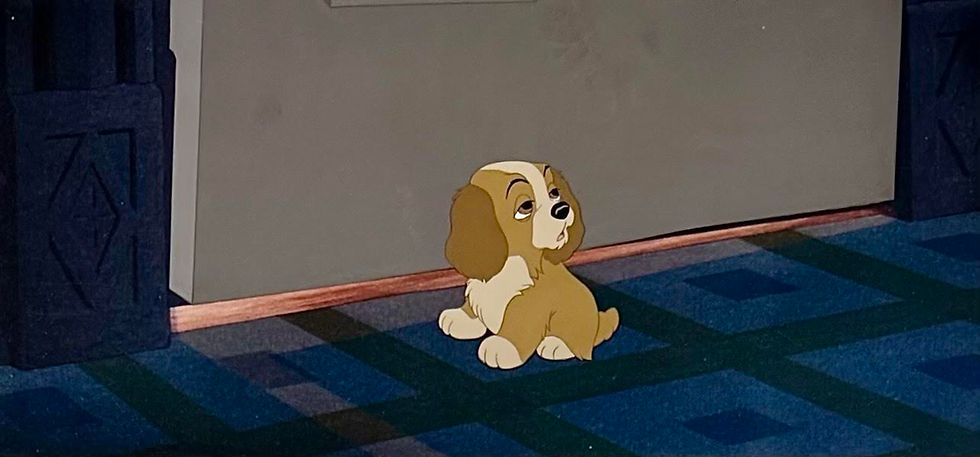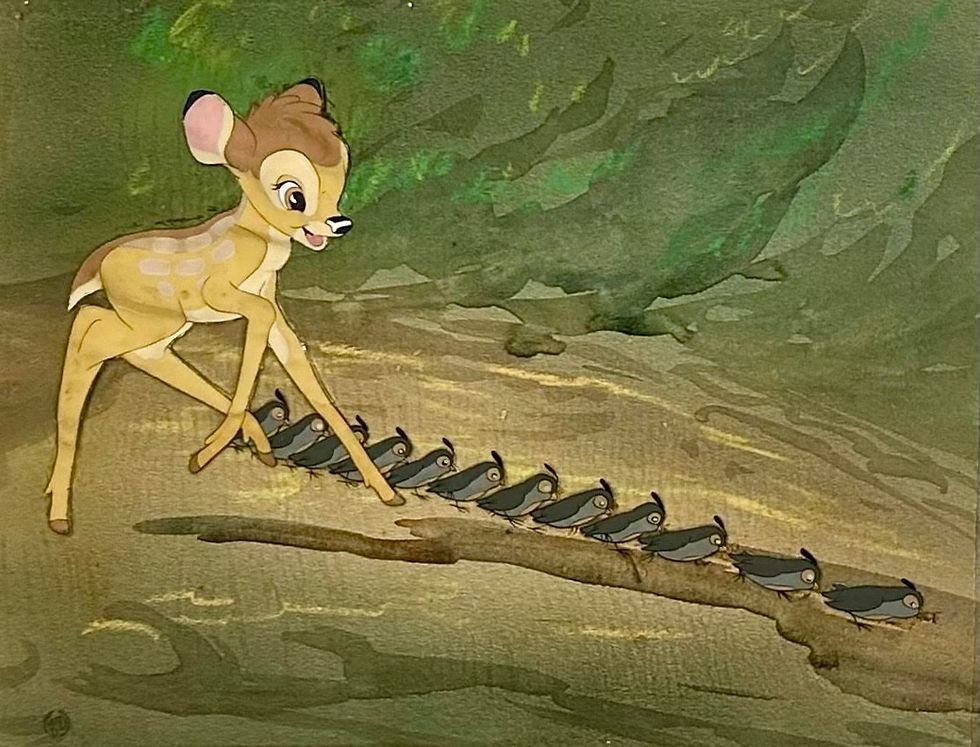Original Production Animation Drawing of Pinocchio from "Pinocchio," 1940
- Untitled Art Gallery

- Apr 18, 2020
- 3 min read

Original production animation drawing in red and graphite pencils of Pinocchio from "Pinocchio," 1940, Walt Disney Studios; Numbered 8A in pencil lower right; Production numbers stamp lower left; Size - Pinocchio with Rock: 5 1/2 x 2 1/2", Sheet: 10 x 12"; Unframed.
"Pinocchio," 1940 was the second animated feature film produced by Disney, and followed on the success of "Snow White and the Seven Dwarfs." 1937. It was released to theaters by RKO Radio Pictures on February 23, 1940 and was based on the Italian children's novel "The Adventures of Pinocchio" by Carlo Collodi. The general plot of the film involves an old wood-carver named Geppetto, who carves a wooden puppet that he names Pinocchio. One night the puppet is brought to life by the Blue Fairy, who informs him that he can become a real boy if he proves himself to be "brave, truthful, and unselfish". Pinocchio's journey to become a real boy is challenged by his encounters with an array of scrupulous characters. "Pinocchio" became the first animated feature to win an Academy Award; it won for both Best Music - Original Score and for Best Music - Original Song for "When You Wish Upon A Star." Most critics and audiences agree that "Pinocchio" is among the finest Disney features ever made, and one of the greatest animated films of all time. In 1994, it was added to the United States National Film Registry as being "culturally, historically, or aesthetically significant."
Due to the huge success of "Snow White," Walt Disney wanted more famous voice actors for "Pinocchio." He cast popular singer Cliff Edwards (who had made the first record selling over a million copies) as Jiminy Cricket. Disney also wanted the character of Pinocchio to be voiced by a real child. The role ended up going to twelve year old actor Dickie Jones, who had previously been in Frank Capra's enormous Hollywood hit, "Mr. Smith Goes to Washington." Animation began in September 1938 and just as in "Snow White," live-action footage was shot for "Pinocchio" with the actors playing the scenes; which was supervised by Hamilton Luske. The animators then used the footage as a guide for their animation drawings by studying the human movement and then incorporating many of those poses and scenes. The title character was animated by Milt Kahl (initial design), Frank Thomas, and Ollie Johnston. "When I was doing Pinocchio," Johnston said, "I thought of the character being real, a living person, not a drawing." "Pinocchio," was groundbreaking in the area of effects animation. The animators gave realistic movement to vehicles, machinery, and natural elements; such as rain, lightning, snow, smoke, shadows, and water. In contrast to the character animators, effects animators create everything that moves around the characters. Sandy Strother, one of the Disney effects animators from "Pinocchio," kept a diary about his year long animation of the water effects; which included splashes, ripples, bubbles, waves, and the illusion of being underwater. All of this attention to detail contributed to "Pinocchio" being one of the first animated films to have highly realistic effects animation. Ollie Johnston remarked "I think that's one of the finest things the studio's ever done" and Frank Thomas stated, "The water looks so real a person can drown in it, and they do." This is a wonderful full figure drawing of Pinocchio underwater. His eyes and mouth are open, he has his donkey ears and tail from his encounter at Pleasure Island, and he is surrounded by bubbles. In order to to weight him down, he has a rock tied to his donkey tail. This is large image of Pinocchio as he goes about searching for his father Geppetto, who was swallowed by the whale Monstro. A great vintage Walt Disney production drawing, perfect for any collection!






